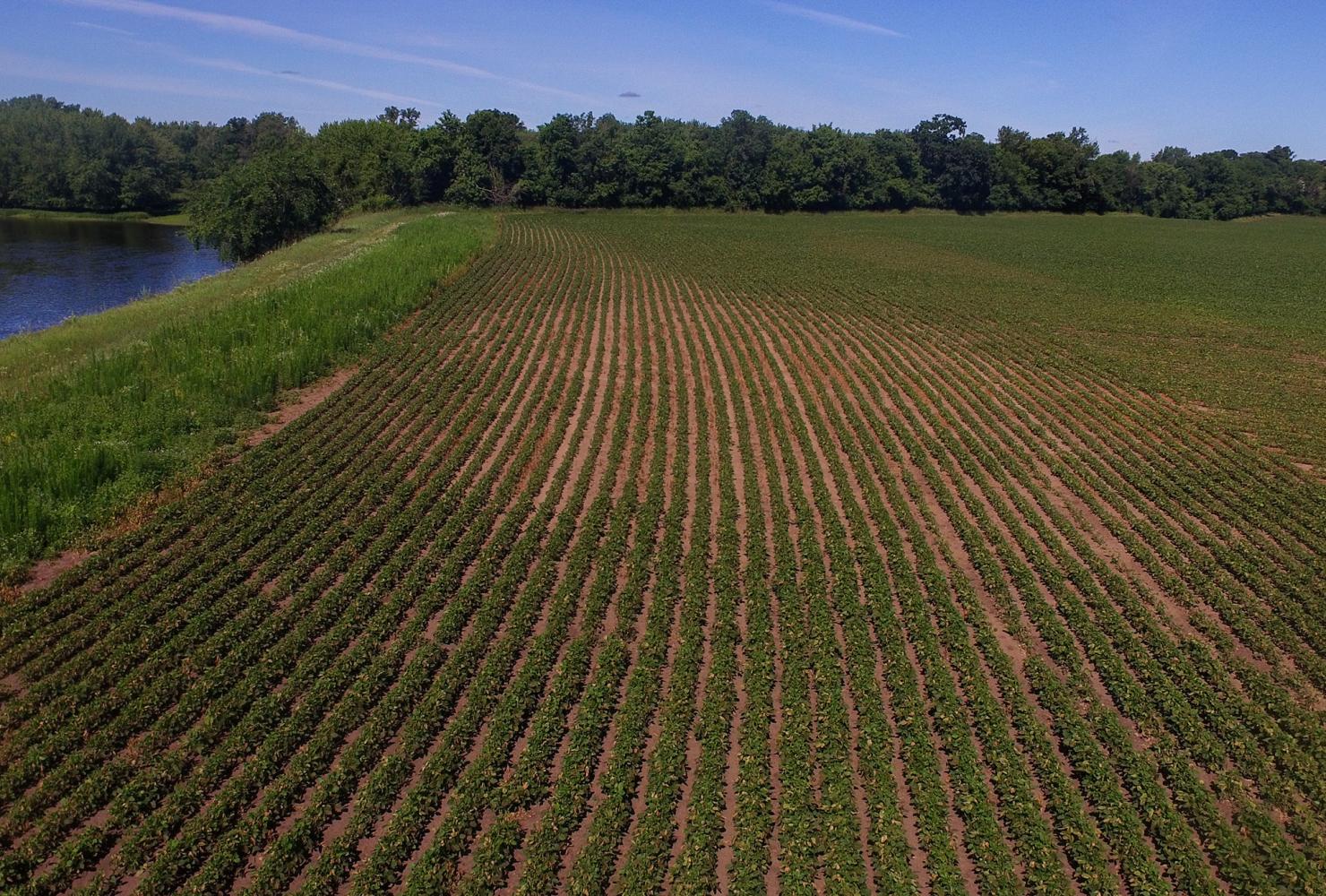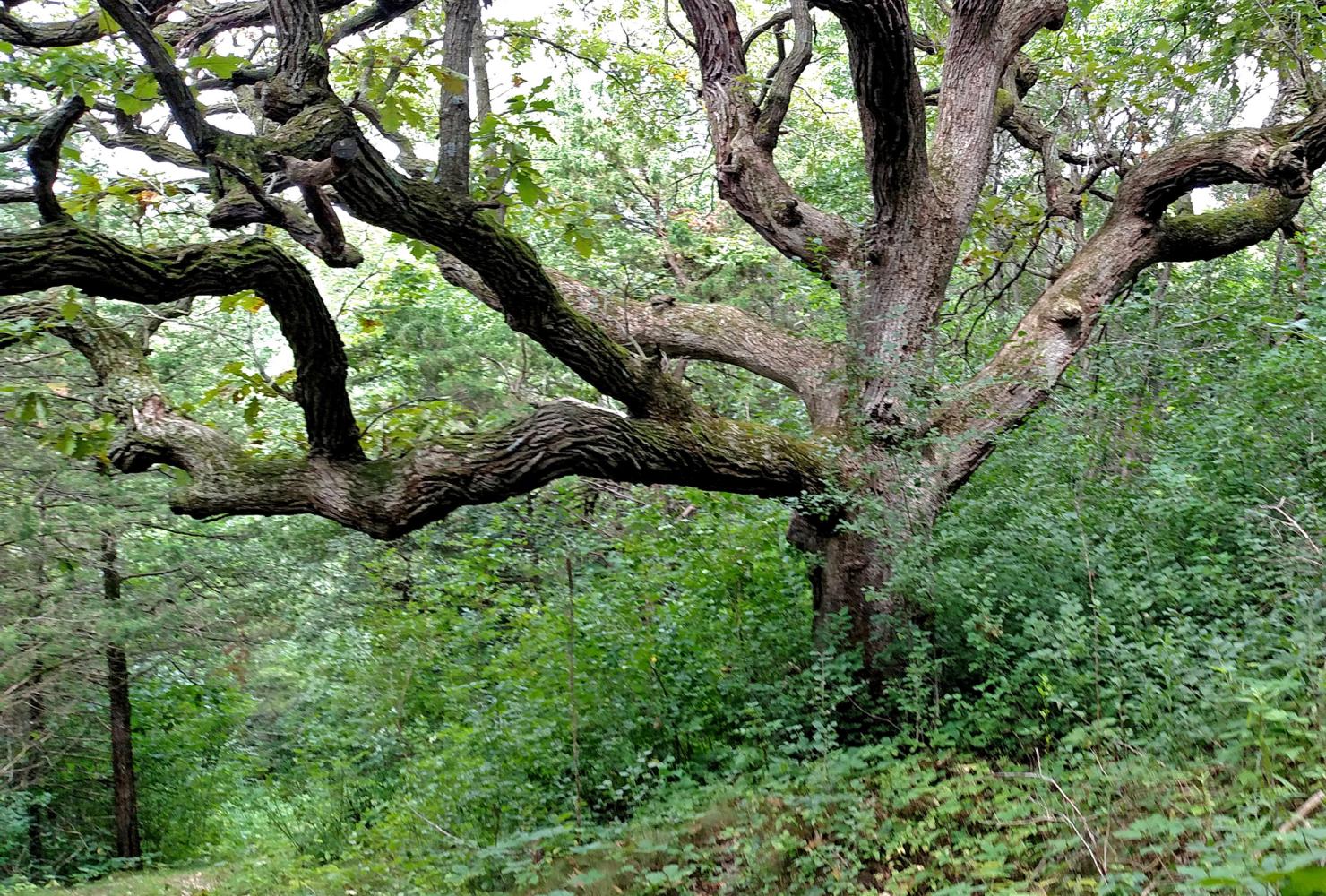How our ecologists piece together a site’s past and plan for its future
When Conservation Director Alex Roth first stood in the 160-acre soybean field he would get to restore, he felt both a thrill of possibility and the weight of responsibility: "I was seeing the present, seeing soybeans in front of me. But I was also seeing the future: waves of golden prairie grasses and flowers. It would be my job to create that, to bring that habitat back."
That was almost eight years ago. If you've visited or volunteered at William H. Houlton Conservation Area in Elk River, you know this vision has come to life. More and more pollinators and birds are finding habitat in the former soybean field-turned prairie, including endangered species like Henslow's sparrow. It's a success story our members and volunteers can be proud of.
What our supporters don't often see is the careful, extensive work that goes on before we begin a restoration: the creation of a Natural Resource Management Plan. "I call it the unsung hero of the conservation process," Alex joked. This document, often 100+ pages long, takes up to a year to develop. FMR has written more than a hundred of these rigorous plans.
The plan holds a vision for what a site could become and a detailed playbook for how to get there. But the first part of planning for a site's future is painting a comprehensive picture of the land's past.
Into the archives
For our ecologists, the past means at least 12,000 years ago, when the last glaciers retreated. "Glaciers are really the single biggest factor affecting our current soil conditions and topography," said Senior Ecologist Laura Domyancich-Lee. And soil, as gardeners know, influences which plants can grow. To dig into the site's history from the ground up, our team turns to sources like old county soil surveys, still only in paper form, and the state's free, publicly available library of geographic information. From that library, they can pull map data on bedrock geology, topography, soil types and more.
One useful archive is from the public land surveys conducted in the 1800s to describe and sell land to European colonizers. Now ecologists and land stewards use the data from that problematic mission to help restore the land, by consulting the record as one set of clues about the natural history prior to the intensive degradation and exploitation that followed from their work. We can look back at the species and size of every "bearing tree" that surveyors marked in the 1800s — one per mile, all across the state — to get insight into the plant communities of the past.
Our team also wants to understand how humans have interacted with these places over time. Minnesota's robust aerial photography database goes back to the 1930s, with images from flights every 5-10 years. When our ecologists call up multiple photos of a site, they might see a prairie transition into a farm field over time.
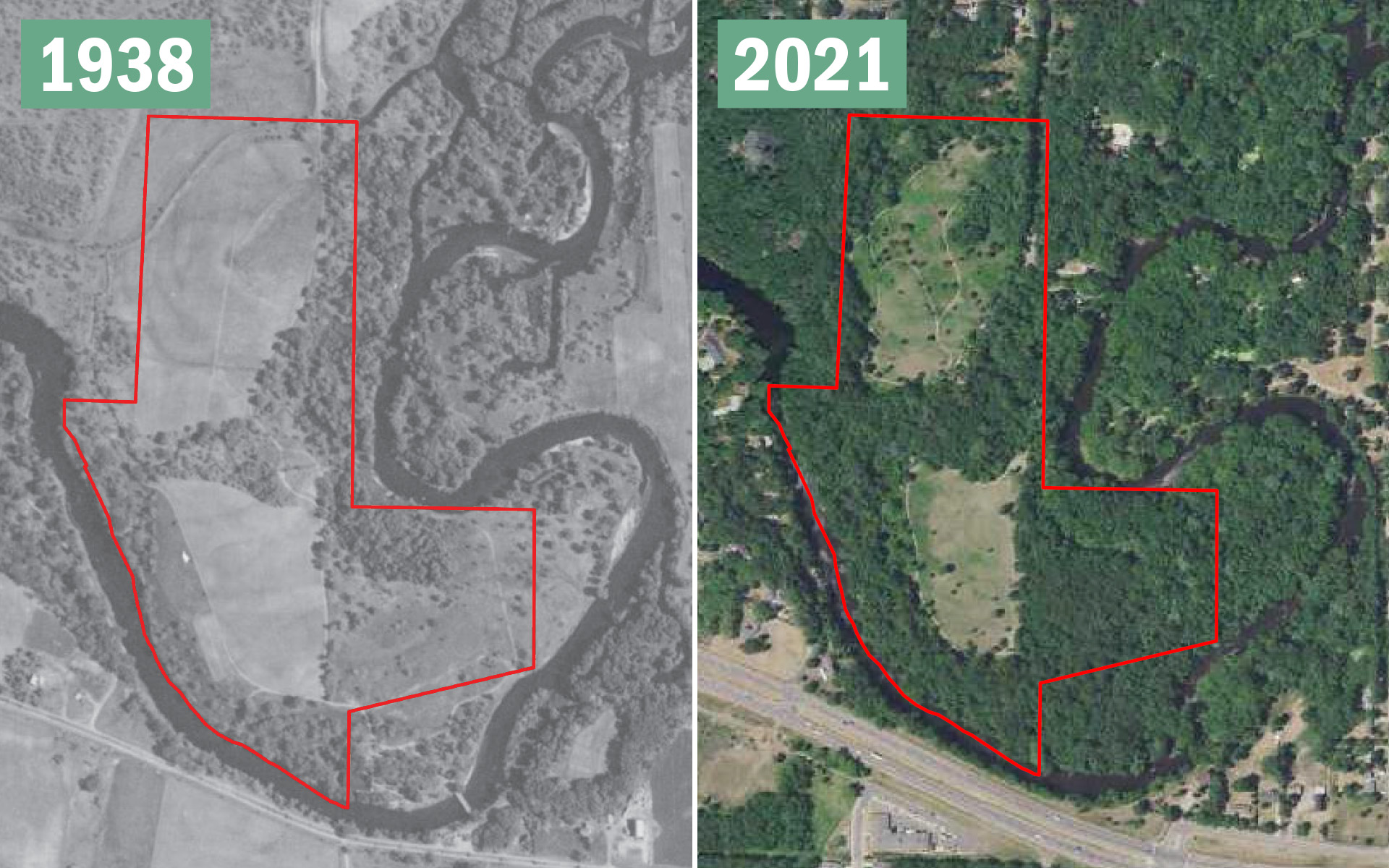
Without grassland-rejuvenating fires, dense woodlands have moved into open prairie and savanna over time at Elk River’s Camp Cozy Park (outlined in red), a new FMR restoration site. (Images from MHAPO)
We work with our tribal partners and other agencies to identify particular areas of significance to the Dakota and other Indigenous people who have been here for thousands of years. "We want to ensure a foundation of respect for those connections anywhere we work," Alex said. "That's why we've begun partnering to incorporate traditional ecological knowledge and culturally relevant plant species and restoration practices in our plans."
Reading the land's past and present
With maps in hand, our ecologists head to the field to ground truth what they've discovered while at their desks. "At first, we walk the whole site to find out what we're working with, like we're making a rough sketch," described Pollinator Biologist Julia Leone. Ideally, our staff team will visit a site many times throughout an entire growing season to observe what's blooming, how water moves through and more. Their visits give them a feel for how the past has shaped the present.
Our team can identify some signs of that even without the initial desk work. "You learn these ways to read the landscape and understand where that site has been," Alex explained. One sign Ecologist Leah Weston loves to find is a majestic old bur oak with wide-reaching branches in a forest: "Even if the understory is now trees and shrubs with no grasses, I can tell that the area used to be a savanna — an oak could only grow with arms outstretched if it was in full sunlight, without shade from other trees."
If she's hiking across a scrubby, south-facing slope, and her boot sinks into sand, Leah knows she's probably on what used to be a bluff prairie now overtaken by woody plants because of the absence of prairie-rejuvenating fire.
"What we're doing at this stage is like the scientific method. We're spending a lot of time making observations, doing our own plant surveys and recording what we see," Leah described. Sometimes those observations match what they expect from their initial desk research. But sometimes, they're surprised: "The desktop analysis gives you valuable but coarse-grained information. When you see a site for the first few times, you start to get to know all the special, nuanced places within the larger site," Laura said. "It's especially fun when I've assumed a site has a lot of degradation, and then I find some really high-quality habitat or see certain wildlife. Then I know how I can help the site turn a corner."
Laura recently worked on a plan for Camp Cozy, a park in Elk River that's seen very little natural resource management so far. She learned about the site from a tipoff from a cross-country coach who had been practicing with his team there and thought it might have some potential. When Laura and Alex visited, they found two small remnant prairies that have existed since before European colonization, a unique and exciting discovery that they couldn't have guessed from maps alone. "I've found needle-and-thread grass there, which you just don't see in restorations because the seed is so hard to process. Only in the right humidity can the plant corkscrew its seed into the ground," Laura noted.
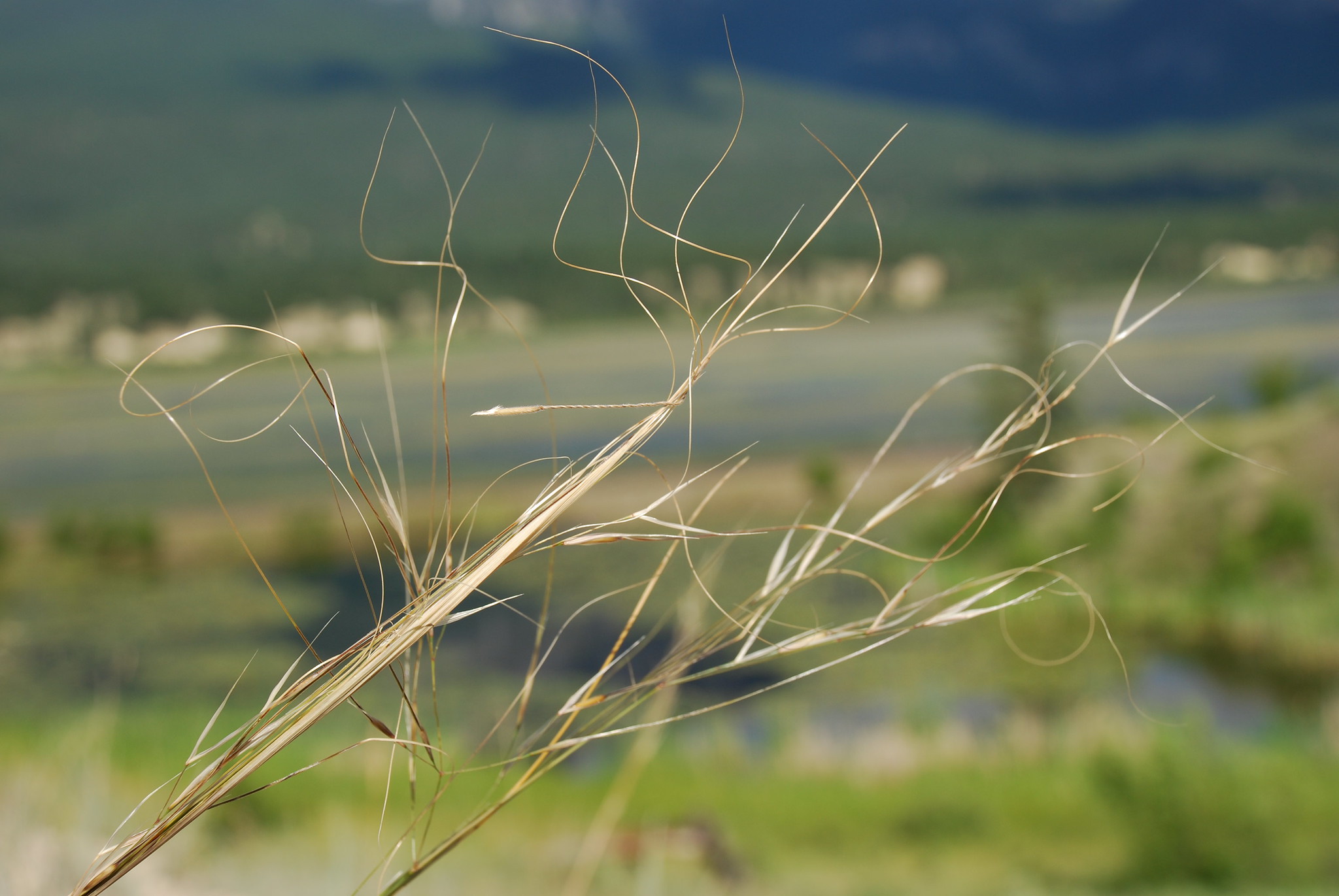
Needle-and-thread grass — named for the look of the thin awn and pointed seed — might be a sign of remnant prairie in Minnesota. (Photo by Tab Tannery)
Needless to say, she was hooked after her first visit, ready to craft and champion a plan to steward the park.
Seeing potential for the land's future
The team makes detailed observations of all the issues that will have to be addressed in a plan too — like invasive species or areas of erosion. But as they're getting to know the land's current conditions, they can't help but imagine what's possible. "Stumbling on a coyote or fox den with tracks going in and out, or remnants of what it's been eating — that's really exciting to see because, even if the habitat is degraded, these species are finding a way to survive. And it's exciting to think how many more species could use the site if we restore the habitat," Alex said.
That includes rare species, like certain native pollinators. Our ecologists research what threatened wildlife the land might be able to support. "If we have a site with prairie and woodland edge, it might be good potential habitat for the rusty patched bumble bee," explained Julia. "We can't just plant flowers and expect pollinators to come and stay; they need nesting sites, as well. They need food and homes like we do. We still have a lot to learn about how to support these species, but recognizing and protecting potential habitat is a good place to start."
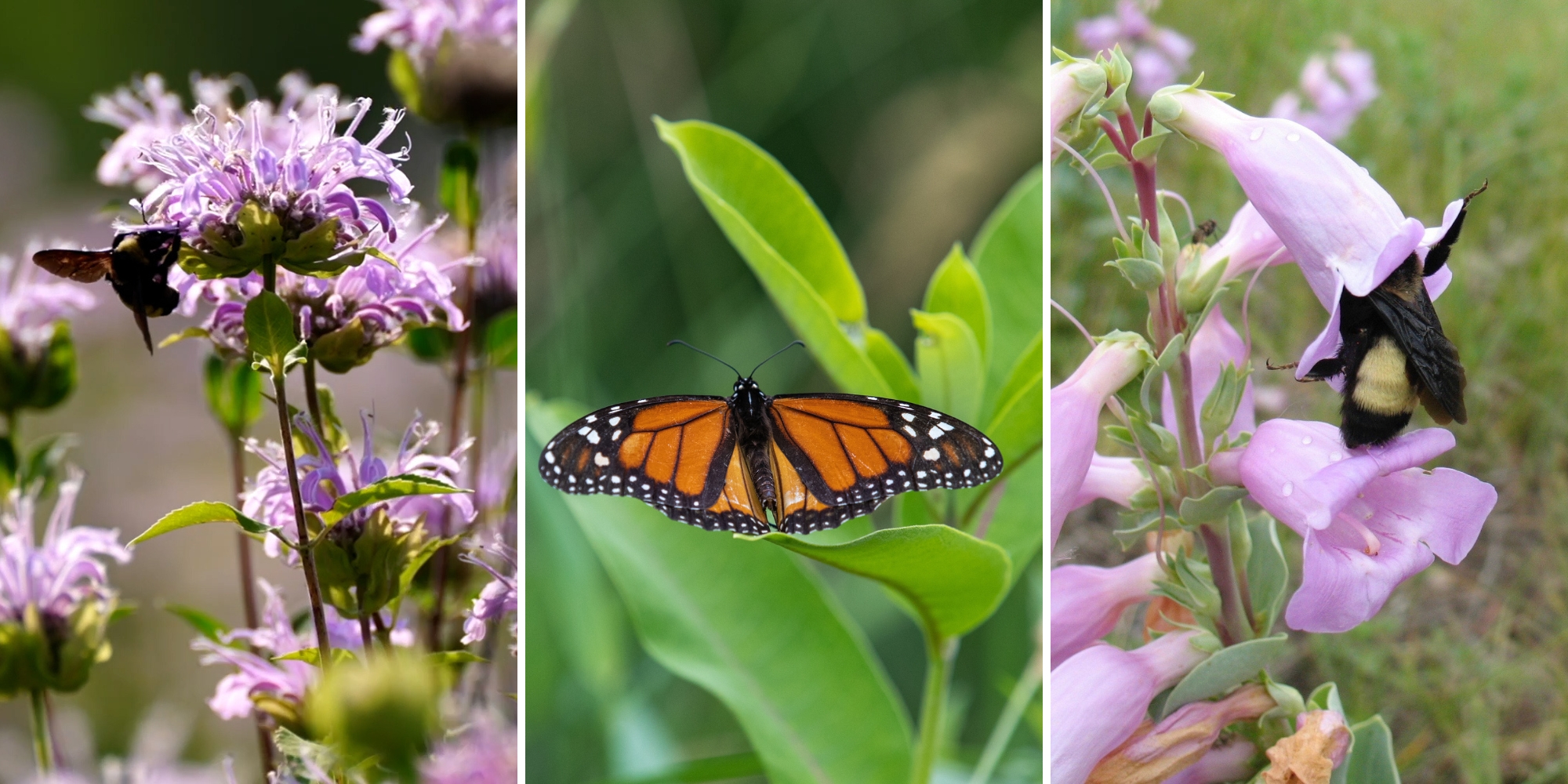
Planning and planting for pollinators: Bee balm establishes quickly in restorations and blooms for extended periods (left); monarch caterpillars can only eat milkweed (center); penstemon (right) blooms early in the growing season when there aren't as many floral resources for pollinators. (Photos by Mike Durenberger, Tom Reiter, FMR)
Does restoration mean going backward?
With dozens of pages of analyses and the beginnings of a vision, our ecologists sit down to hammer out practical recommendations for the site's future. The term "restoration" implies going backward, returning to a previous time. "The landscape has changed so much since European colonization," said Leah. "The former plant communities supported more insects and wildlife, and a lot of them are no longer here. If we can understand what it was like before, then during our assessment, we can decide: Could this ever support that community again? How can we get there?"
Pre-colonization plant communities were more diverse and resilient, and they supported more abundant habitat overall. That's a great starting place. But returning to pre-colonization habitat isn't always the goal. "Sometimes a community has changed so much over time that it doesn't make sense to 'go back.' Maybe it would be too disruptive, expensive or impractical, or the current conditions actually provide some really crucial habitat or functions," Alex explained.
Our team is also thinking about what species might thrive in Minnesota's predicted future climate. You won't find any sycamores in the bearing tree data for Minnesota, for example, but that species could better survive our new weather patterns due to climate change, helping to preserve forests. "The Twin Cities' climate will be more like Kansas in the not-too-distant future. We need to be thinking about how to maintain the function and diversity of these communities," said Alex.
Finishing the plan is just the beginning
Coming up with a plan for hundreds of acres of land may sound overwhelming. Our staff team breaks up each site into areas that share characteristics, features and issues. That way they can strategize and plot out prioritized action plans for each unit, defining phased timelines, individual tasks and cost estimates. When FMR, the landowners, partners and community are all on the same page about what's possible and sustainable, restoration can begin, and all this hard work pays off — Natural Resource Management Plans don't gather dust on a shelf: "In those first five years, we're always referencing our plans because they tell us exactly what we need to do," noted Leah.
Of course, even the best plans require some revisions, especially plans involving the complex, dynamic systems of the natural world. The responsive approach of adaptive management is key. Land is always changing. "You won't know how it's changing unless you've been to a site a lot and you keep going back to see the changes," explained Leah.
As a result of the planning process, FMR ecologists have not only a practical guide for restoration. Importantly, they also have the beginnings of a long-lasting relationship with another special place.
Alex no longer manages the William H. Houlton Conservation Area project; it's in Laura's capable hands now. But he'll always feel a deep connection to that place: "Now when I visit, I feel less of that initial responsibility because the site is once again a diverse, resilient community. I just get to enjoy being there, knowing that FMR played a part in creating this wonderful space that's so important for people, wildlife and water."
